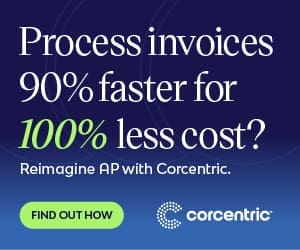Erp Solutions Easing The Cash APplication Process For Cfos

Cash Application Process In B2B Software
Seeking to reduce financial costs, close the books faster, and minimize accounting errors within the order-to-cash cycle, CFOs are increasingly looking to Enterprise Resource Planning (ERP) solutions to facilitate cash application processes. In industries with significant manual accounts receivable activities, automating cash application processes can eliminate costly delays, introduce more control, and increase visibility.
ERP solutions provide CFOs with much-needed insight and accuracy that manual processes lack. Depending on their size, ERP software providers offer ERP solutions in multiple retail-focused versions designed to help finance departments maximize the financial operations. This article provides step-by-step guide describing the available features of ERP solutions for cash application processes to help CFOs make informed decisions about the technology that best meets their customer demands.
Step 1: Develop an Effective Cash Application Strategy
As businessestrive to reduce the strain of manual cash application processes, it is essential that CFOs first develop clear cash application strategy. CFOs must consider the volume of customer payments, the customer payment cadence, and any industry-specific payment transaction standards. Collectively, this information allows CFOs to choose an ERP solution that aligns with their customer payment terms.
Step 2: Evaluate ERP Solutions
After selecting budget and understanding the customer payment terms, it is time to evaluate ERP solutions. The evaluation process should include an assessment of how the ERP solution provides customer and supplier payment visibility and how quickly it can recognize and manage cash and credit updates in customer accounts.
Integrating the ERP solution with customer and supplier invoicing processes can help reduce exceptions and improve cash application accuracy. Additionally, the ERP should enable CFOs to incorporate customers preferred payment methods, such as Automated Clearing House (ACH), credit card, and Stripe.
Step 3: Establish Automated Cash Application
The evaluation process should also include understanding how ERP solutions automate cash application processes. Automation of these processes replaces manual cash application procedures with automated methods that allow business leaders to capture and collect payments from customers faster and with minimal errors.
The automation of cash application should include assigning unapplied cash and payments to customers, providing goal-driven analytics to drive customer interaction, setting up automatic document creation, and recognizing and responding to changes in customer payments.
Step 4: Monitor Outstanding Accounts
Finally, the ERP solution should provide insight into outstanding accounts. This feature should provide CFOs with the ability to accurately monitor and manage customer account balances regarding outstanding payments. The solution should also enable CFOs to monitor credit limits, view feasible payment methods, and stay on top of customer payment terms.
Conclusion
In conclusion, CFOs searching for effective ways to reduce manual cash application processes should leverage ERP solutions. ERP solutions ease the cash application process by automating and controlling customer payment transactions. ERP solutions provide means to quickly recognize and respond to account discrepancies and enable CFOs to monitor and manage their accounts. As business demonstrate an increased demand for fast and automated cash application processes, ERP solutions remain an invaluable asset for finance departments.

